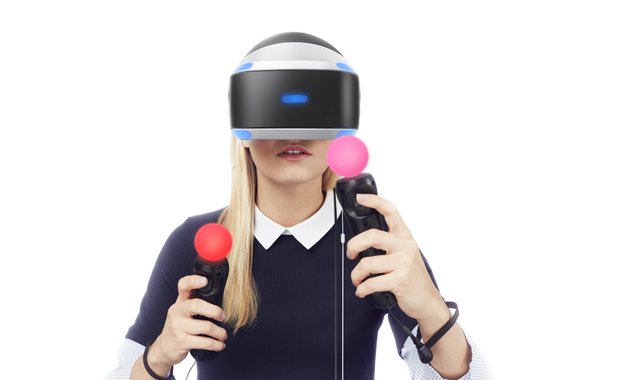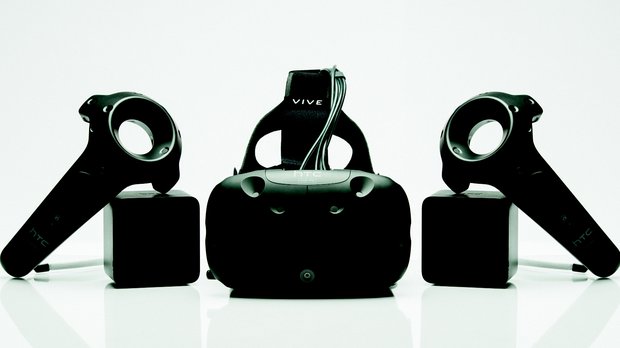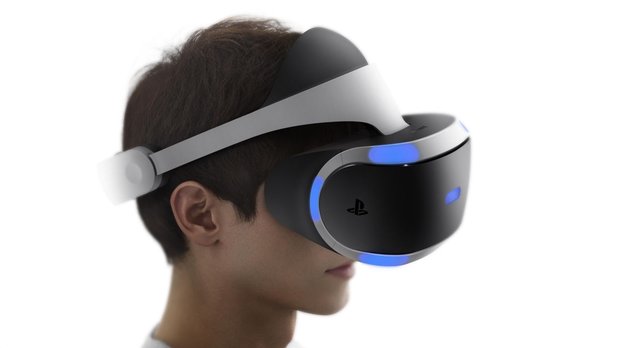The Outsider: VR is the future of games like zeppelins are the future of air-travel
The Outsider: He's here to judge you. Here's here to judge gaming's sacred cows. And he's brought his bolt gun. His views do not necessarily represent those of the GamesRadar+ team... and by that we mean 'definitely'.
Virtual reality is the future. I say that with confidence, because anything that’s been the future this many times has to know what it’s doing.
Virtual reality was the first future in 1935, when Stanley G Weinbaum wrote Pygmalion's Spectacles, a sci-fi short about VR goggles. Almost immediately, life failed to imitate art, and everyone went back to looking at images of naked people in 2D like normal.
Then it was the future again after WW2, when the military added screens to flight simulators used to train pilots, and in doing so created virtual worlds. Only minutes later, someone tried having mile-high sex in the simulated toilets at the back of the plane, and was shot by a badly-pixelated air marshal posing as a non-existent passenger. Such are the tragedies of war.

Next it was the future in 1960, when Morton Heilig invented the Telesphere Mask, a design so advanced it looked like the stupid faceboxes we have now. The world rushed towards this new tech, but upon reaching it couldn’t remember why. So the world cast around a bit and went slowly back downstairs. This left Virtual Reality free to become the future in 1975, when Myron Kruegere – enraged to find he wasn’t the evil scientist his name befits – created VIDEOPLACE.
Though fantastically pretentious, VIDEOPLACE was not a £12-a-beer ‘bar experience’ in Hoxton but a virtual, computer-generated environment in which physically distant people could gather and say things like LOL and Suck it ur ghey. So, more like a Young Conservatives Club. Interestingly, VIDEOPLACE was later reskinned by a depressed Gap store designer, given a few bugs and released as PlayStation Home.
We’re nearly done with the history of the future, so stick with it.
Sign up to the GamesRadar+ Newsletter
Weekly digests, tales from the communities you love, and more

In 1987, the phrase ‘virtual reality’ at last became common thanks to Jaron Lanier and his VPL. It wasn’t his Visible Panty Line that attracted all the attention, though as a large white man with dreadlocks it was no doubt formidable, but his Visual Programming Lab. VPL created a large range of gear, including what Oculus Rift fans would recognise today as a big stupid facebox to put on your head. VPL also created the Dataglove, later to become Mattel’s Power Glove, which sold really well before everyone at once realised it was, on a scale of one to ten, shit.
Virtual Reality really became the next big thing in 1992, when Hollywood made The Lawnmower Man, a $10m flick where James Bond (Pierce Brosnan) drugs a mentally disabled gardener and wedges him into PlayStation Home (I haven’t seen it).
The following year it was the future for a seventh time when Sega got involved (building a stupid face thing), and once more in 1995 when Nintendo got involved (stupid face thing)… and so on and oh my god I can see my own feet when I turn my head. This is amazing. Of course, it’s been the future this whole time because we’ve all been playing with Virtual Boys since the 90s. That sounded wrong.

Fast forward to 2016 and Oculus Rift may or may not have just become available, marking the point where virtual reality – boosted into the mainstream by The Matrix, Tron and 1995’s Virtuosity staring Denzel Washington – really actually totally just did become the future. Just like 3D!
Just like motion control!
Just like trans-Atlantic Zeppelins!
That’s right. Sarcasm.
Of course, it’s not just the Facebook-backed Oculus convincing us all to elasticate what looks like a shoe over our eyes and hope we don’t get punched in the balls or simply fall over. There’s the HTC Vive, which Valve has made instead of Half-Life 3 (thanks Valve!), and the PlayStation VR, which will follow in the footsteps of the PlayStation Eye, The PlayStation Vita and the PlayStation Wavy Wand Thing With The Glowing Ball Remember In The Back Of The Cupboard, Yeah? to work fine but somehow fundamentally disappoint.
Actually, there are LOADS of VR devices, from the £260 Deepoon E2 3D to the BOBOVR Xiaozhai Z3 3D Virtual Reality with its whopping £16 price tag. So beautiful is the future of the Deepoon that even its marketing is poetry:
Immersive 3D technology, no longer the traditional game mode, Various game interactive experience. More lifelike game scene.
These are real tears I’m crying.
So yes, VR is the future… as in, ‘not now’. As impressive as the tech is, it remains expensive, uncomfortable and awkward, and it not only makes you look stupid but leaves you blindly vulnerable to fools, tools and footstools. Those are some big hurdles between VR and everyday use. We’re not even close to clearing them yet. Like, duh.
And that, my friends, is that.


